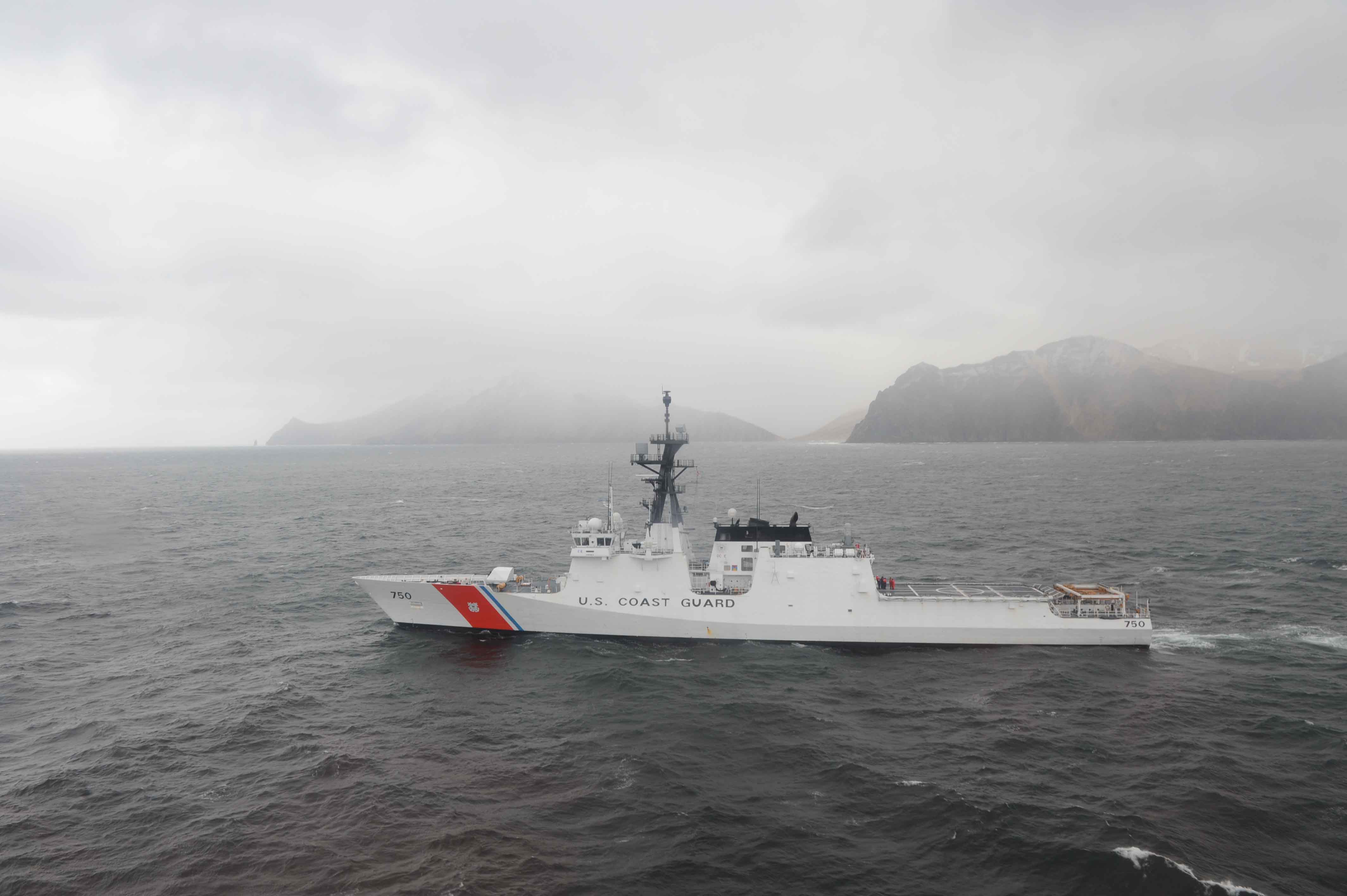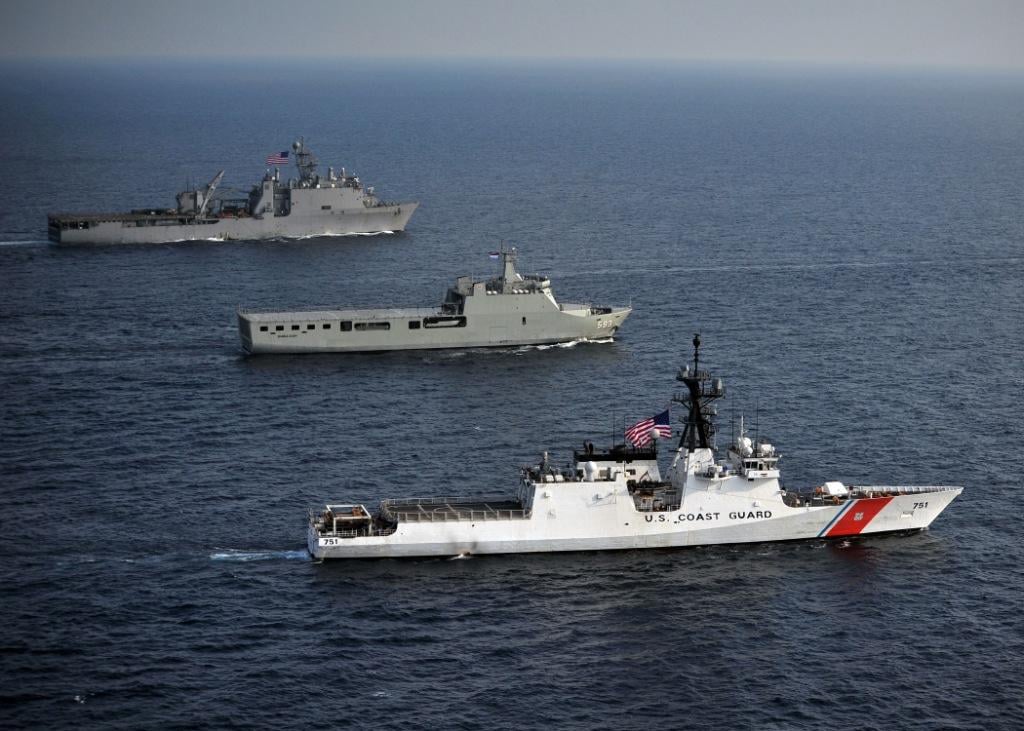
Over the past few years there has been much debate in Congress and in the Department of Defense over the requirement to maintain a Navy fleet that will be able to respond to the increasing demands of the combatant commanders.
In a recent op-ed piece in The Wall Street Journal the Secretary of Navy Ray Mabus said, “Size matters. It’s as true for America’s Navy as anywhere. It is the size of our fleet that uniquely enables the United States Navy and Marine Corps to maintain presence around the globe, around the clock. That presence has kept the peace and promoted prosperity via trade across open sea lanes for nearly seven decades.”
However, one arm of our national security structure that is often over looked and is well underfunded is the U.S. Coast Guard. No other service does more with less than the Coast Guard.
While DoD has seen some relief from sequestration, the Coast Guard has not benefited from any additional funding. In some cases DoD has the advantage to use Overseas Contingency Operations (OCO) funds for overseas operations and maintenance. Yet even though the Coast Guard has forces forward deployed, they have not benefited from this special account.
For a service that has some of the most demanding missions to support our national security, the current departmental funding falls well short of the requirement. Some of these missions include maritime homeland security, maritime law enforcement, search and rescue, marine environmental protection, and enforcing U.S laws in the world’s largest exclusive economic zone—3.4 million square miles. And the Coast Guard undertakes its duties with an annual budget of about $10 billion and an active duty roster smaller than the employees of the New York City Police Department.
As commander of Combined Task Force 151 in 2009 I witnessed first-hand the excellence the Coast Guard law enforcement detachments (LEDETs) provide to the Navy for forward-deployed operations. Most naval officers receive very little training in the procedures required to take armed pirates into custody on the high seas. I was fortunate enough to have a highly trained team and we were able to send a large contingent of pirates to trial in Kenya. Additionally, during the height of pirate activity in the Gulf of Aden in the spring of 2009 the USCGC Boutwell high-endurance cutter deployed to the region and successfully disrupted several pirate attacks.
Even though the Coast Guard has taken on more requirements in the post Sept. 11, 2001 era the consequences of sequestration have started to directly affect some of the basic mission requirements. Like the Navy, the Coast Guard’s fleet, will see a major reduction in the next few years and, if the trend is allowed to continue, this could jeopardize our national security. If the Coast Guard does not see an increase in its shipbuilding account, the fleet of high and medium endurance cutters will suffer a major decrease in the next ten years.
One notable shortfall that is facing the Coast Guard is replacement of its fleet of high endurance cutters. In service since the 1960s, the 12 Hamilton-class cutters served the nation well in some of the most demanding environments, from patrols in the Bering Sea to rescue operations in the harsh winters of the North Atlantic. Today the Coast Guard’s major endurance cutter fleet is being replaced by eight Legend–class national security cutters (NSCs). A larger and more capable platform than the Hamilton-class, the NSC is a welcome addition to the Coast Guard fleet, but as Mabus said, in the maritime world “size matters” and the Coast Guard can hardly be called upon to carry out all the required mission requirements with a 33 percent reduction in the size of its high endurance cutter fleet.
The post-Sept. 11 era has seen a remarkable increase in the Coast Guard’s national security requirements. There has been a major emphasis on the Arctic region and currently neither the Navy nor the Coast Guard has the platforms capable to support the nation’s interest in that region. With the expansion of shipping, drilling and commerce, the Arctic region has become a high interest area for our national security. Additionally, as DoD’s new strategy shifts focus to the Asia-Pacific region, the Coast Guard will be unable to carry out all the requirements from the Pacific commanders with a reduced fleet of high endurance cutters. The USCGC Waesche participated in the 2014 Rim of the Pacific (RIMPAC) war game, the largest multi-national maritime exercise in the world. Capt. John McKinley, the cutter Waesche’s CO, said that, “participation in RIMPAC [was] an incredible opportunity for us to really exercise the capabilities of the national security cutter with our DOD and international partners. The lessons we learn here will strengthen our ability to work with our partners to respond to the real world threats faced by all nations with interests in the Pacific.” Since most of the navies in the Asia-Pacific region stress the same mission set as our Coast Guard, the importance of bilateral operations in the region cannot be over emphasized.

The other major issue that has received very little attention in support of the Coast Guard’s mission is the decommissioning of the Navy’s Perry-class frigates. For many years these highly capable vessels served as the staging platforms in support of Coast Guard counterdrug law enforcement detachments and on-scene presence operations in the Caribbean region. In 2014 alone, with direct support from Coast Guard law enforcement detachments, the USS Gary successfully interdicted over 11,700 kilograms of cocaine shipments bound for U.S. streets. The absence of those platforms will leave a major gap in U.S. engagement activities in the region to counter illicit trafficking operations and training with our allies. Additionally, the decommissioning of those platforms will dramatically increase the burden on the national security cutters.
The Legend-class national security cutter has enhanced capabilities to detect and protect our national interest in the far reaches of our national shores. It provides the Coast Guard with a state-of-the-art platform to confront some of the current major maritime national security challenges, but they can’t be in two places at the same time. The major concern is that the Coast Guard will not have the right sized fleet to meet all future requirements. Those cutters will be in far greater demand in the future for the protection of our interests in the Arctic and monitoring the increasing flow of trade from the Asia-Pacific region, not to mention the less-policed Caribbean drug routes. Congress and the Department of Homeland Security need to take a hard look at the constraint to stop the program at only eight ships and continue to build these platforms to ensure the maritime requirements of our national security are met for years to come. It cannot be overstressed — size matters and our national security fleet needs to be the right size.





